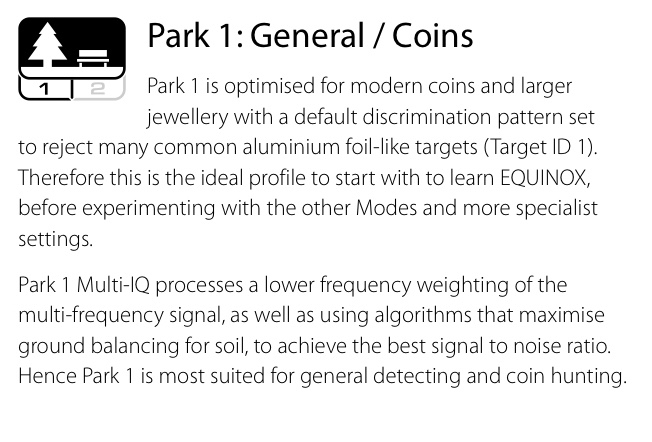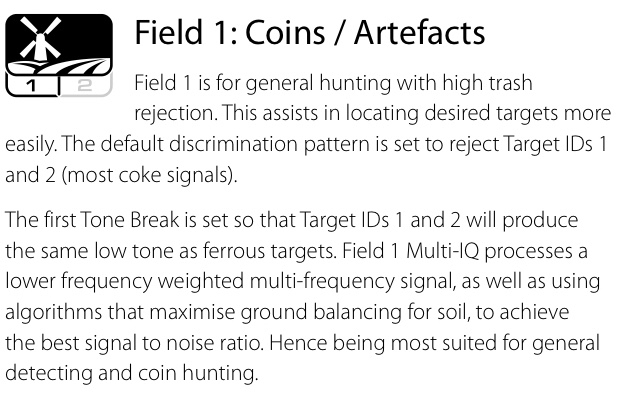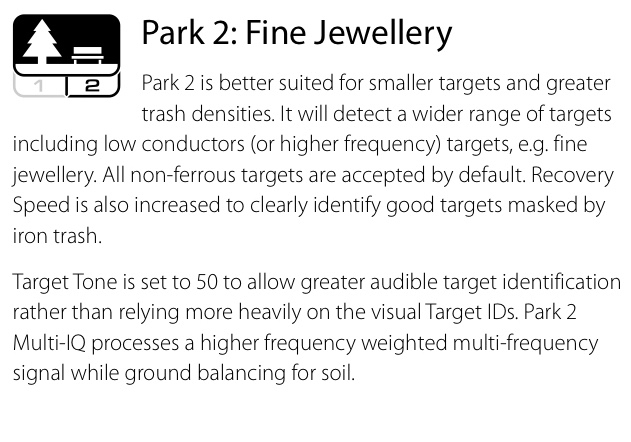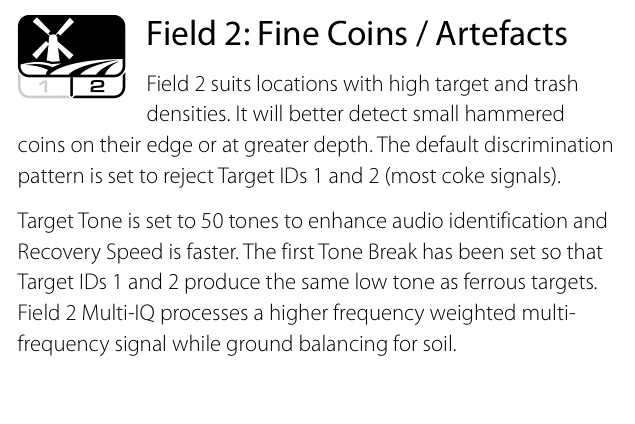-
Posts
19,835 -
Joined
-
Days Won
2
Content Type
Forums
Detector Prospector Home
Detector Database
Downloads
Everything posted by Steve Herschbach
-
Welcome to the forum! I would be surprised to see such a thing from Minelab. On the flip side an aftermarket tall man rod is nearly a certainty. If Anderson is not already working on one they are missing a bet. Your guess is as good as anyone’s as to when.
-

Cabelas Has Equinox In Stock Sold Out
Steve Herschbach replied to Thegoldenone's topic in Minelab Equinox Forum
You guys are probably each assuming posts are referring to you when they are not. I make that error a lot myself. How about we all just thank you Vets from the bottoms of our hearts for your service and call it good. -

Equinox 600's On Ebay Sold Out
Steve Herschbach replied to Thegoldenone's topic in Minelab Equinox Forum
The 600 has better early availability due to the extra early demand for the 800. For many people the price difference is not that much so they just opt for the 800 automatically. I will probably end up with an 800 and a 600. The 600 will be the only one to get into saltwater. The 800 will be my dry land unit, and each will back the other up. -

Hitting The Beach Tomorrow With My New 800
Steve Herschbach replied to Nuke em's topic in Minelab Equinox Forum
Good to see machines are finally reaching the U.K. With the announcement being at Detectival I would have bet nearly anything that you blokes would be getting the first detectors, but apparently shipping and customs thought otherwise. Looking forward to your report - good luck! Push the button on upper right to start the detector looking for the headphones. Hold the button on the headphones pressed in the on position for like three seconds then let go and wait a minute. Should pair up, and after that you only need to turn the units on as they will stay paired until you change to the WM08 or do a factory reset. Or just plug them in and go! -
Come to find that forum member Mike Haer has a weekly podcast each Monday that I have been generally oblivious to though I think I linked to it in the past on a given subject. Anyway, Mike had another new forum member, George Kinsey, on last week and the forum was mentioned. Many hours of listening available there from past shows so check it out. And thanks for the mention guys!! https://www.spreaker.com/show/all-metal-modes-show Mike’s Website
-

Is Park 2 The Magic Mode??
Steve Herschbach replied to Mountain Mike's topic in Minelab Equinox Forum
People have probably seen it but here is the link to the other thread for posterity because it is relevant to this thread... -

The Simple Reason Why Equinox Is Special
Steve Herschbach replied to Steve Herschbach's topic in Minelab Equinox Forum
It is actually like owning several detectors and I hate to stir the waters even more right now but the mode names themselves are just general guides. For instance, prospectors might want to know that if mineralization gets extreme the Beach modes may offer benefits, especially in alkali ground. Or people hunting wet fields doused in fertilizer may want to keep the same thing in mind. There is a lot to learn here still. -

Zeq--- " Zeke On The Beach "
Steve Herschbach replied to vanursepaul's topic in Minelab Equinox Forum
I wish the name was Eclipse instead of Equinox. -
People argue to this day over what BBS and FBS transmit and all the nonsense over numbers of transmitted frequencies and whether they are processed simultaneously or in sequence. It has never been where the real magic resides and is great misdirection on the part of Minelab as regards the competition and counterfeiters. Makes for lots of nice marketing fluff also. Bruce Candy at Minelab actually got his start in signal processing. Take a look at some of his audio amplifier patents at https://patents.justia.com/inventor/bruce-halcro-candy?page=2 He is one of the leaders in low distortion audio amplification. Check this out http://halcro.com/history/ It is Candy’s genius for audio processing with top end components that lead directly to Minelab’s success in metal detector technology. Yes, the transmission matters, but it only sets the stage for what is received and then more importantly, how it is processed. You can transmit all you want but if you do not know how to process the returned information properly then all is for naught. The newer, younger engineers at Minelab have that base and history to build on. They are geniuses in there own right, adding their own distinctive twists to all this. It’s easy to determine what is being transmitted, and if that is all there was to it Chinese copies would be out next week. Signal processing is the genuine secret with Minelab, and it is tightly locked in Wayfarers “Black Box”.
-
I have to admit I was not paying much attention to the nail board test - everyone does them with different nails it seems so unless they compare directly to another detector in the same test they really don’t mean much to me. I just wanted you guys to see that the 6” coil is in final testing to the point where one has been shown by a tester.
-
This illustrates part of the issue. This new video compares modes on a nickel and dime and a quick look would seem to confirm that there is a difference in the Park and Field modes. However, those differences can be attributed to the setup as much as any possible underlying difference in the processing. The vast majority of the videos I see are by people who still really don’t understand the detector fully (I am not referring to this one specifically). As I have tried to point out it is imperative that each mode is individually ground balanced. Yet if anyone is doing that in their comparative videos they are not saying so. There are numerous fine differences in Detect Speed and Iron Bias that are not being accounted for. The blocking or modification of target id 1 and 2 alone can change the results of nail board tests. I could make a full time job of pointing out issues with videos but I do not have the time, and as much as I would be trying to be helpful I would be seen as another unappreciative critic, so I am not going there. Anyway, this video shows results with default settings. To truly try and see if the Park and Field modes are equivalent the settings in both modes would have to be identical. One thing I learned from all this is that target id 1 and 2 are not only blocked by default in Field 2 but have had the tone modified to sound as ferrous. So in Park 2 you just have to unblock them to find tiny gold. In Field 2 you have to unblock them and be sure the tone is set back to non-ferrous. I have been accidently sidestepping that issue by always going to 2 tones when prospecting (the default in Field 2 is a modified 50 tone). That all being the case it may be easier for me to use Park 2 as my alternative prospecting mode to eliminate a step in setup, assuming they might be the same otherwise. Yes, I also have things to learn still . Equinox can be deceptively simple but as you really dig into the settings it is rather more complex than one imagines initially.
-

Equinox Gold Prospecting Yuma Az
Steve Herschbach replied to Condor's topic in Minelab Equinox Forum
It all boils down to popularity. The more popular Equinox is, the more units there are out there to create a market for accessory coils - that is the secret to future coils. Minelab in general does not want third parties to produce poor coils that would create performance issues that people would attribute to the detector itself. I do not blame them for wanting to control that. I on the other hand think accessory coil selection is a very important key to any detector’s overall success, so I have been lobbying Minelab not only to allow other companies to make accessory coils, but to help them do it. My guess is it will happen but like everything Equinox holding your breath is not advisable. Right now we need the get the 6” coil out. Then the 12” x 15” coil. More will no doubt follow in time and I do expect a 6” x 10” eventually from Minelab or a third party. And many more also. But it will take time and I am not talking weeks or months but years. Anyone who was around might use the X-Terra build out as a guiding light because the situation is similar. As much respect as I have for Coiltek however I hope more companies are allowed to participate. -

Zeq--- " Zeke On The Beach "
Steve Herschbach replied to vanursepaul's topic in Minelab Equinox Forum
Only the first character in most words can be in caps unless in my override list. Do not use quotes or parentheses or if you do, leave a space, as I have done in now that I have edited your title. As long as you refer to the ZEQ nobody is going to have a clue what detector you are taking about. Well, I know what’s up so I know but everyone else.... -
That is an excellent question Bryan and a fair assumption. I have wondered the same thing but Minelab is very tight lipped about exact details of Multi-IQ and so I don’t speak for them on exact details. I have inquired to seek clarification direct from the powers that be. Being a go with the flow guy I have tended to follow Minelab’s lead and when park detecting for coins I use Park 1. When I have wanted to make the machine more sensitive to small items like micro jewelry or gold nuggets without going to the Gold Mode I have numerous times mentioned Field 2 as being my favorite alternative to Gold Mode. This is because of my underlying assumption that Field 2 has something going for it that Park 2 does not. I have absolutely no data from my own actual use however to back that assumption up. It is quite possible Bryan that you have it right and the underlying core is the same with the difference being in the setup. One of the best questions I have seen yet. I hope I will be able to provide more clarity soon outside of us all experimenting to figure it out. As Chase has noted it is the hidden signal processing that really makes the difference and that is probably the most tightly kept proprietary secret that Minelab possesses at this time. When analyzing the manual the difference if any would appear to be subtle. Note that in some cases target id 1 and/or 2 are either being blocked or set to produce a ferrous tone. This is extremely important information for anyone hunting the very weakest targets as those two id numbers are where tiny gold nuggets and micro jewelry/fine chains will appear. Along with thin foil, tiny can slaw, and coke, which is why the default is to reject them.
-
The reason Equinox is special really is simple. It is because it is truly different. Any detector is a set of parameters. At the most basic it boils down to combinations of frequencies and coils. VLF or PI. Whatever. Take any detector to a spot, and detect until you can find nothing more of interest. Now, by simply changing the coil, you can make more finds missed previously. You have to change the parameters. Hunt a spot to death with detector A. For example a Garrett AT Pro running at 15 kHz. Now switch to a different detector, perhaps Whites MXT running at 14 kHz. Slightly different machine with slightly different coil and frequency. A missed find or two commonly appears because what one machine misses another may hit. Jumping to something like an E-TRAC is an even more radical change, and again new finds may be made. Short of firing up a PI and digging every item out of the ground, most experienced detectorists know that no one detector gets it all. For that reason I am a contrarian. If everyone else is using detector A someplace you can bet I am going to give detector B a go. I have found that being different often pays off for me. The are limits to sheer physical depth. The fact is more depth is not the secret to new finds in many cases. We need different processing methods that can find items missed by what went before. Unfortunately in recent years it has got to where “new” detectors are just old detectors with a fresh coat of paint. I think now people are starting to realize what Minelab has been saying all along. From http://www.detectorprospector.com/metal-detecting/minelab-multi-iq-technology-details-explained.htm ”Multi-IQ is Minelab’s next major innovation and can be considered as combining the performance advantages of both FBS and VFLEX in a new fusion of technologies. It isn’t just a rework of single frequency VLF, nor is it merely another name for an iteration of BBS/FBS. By developing a new technology, as well as a new detector ‘from scratch’, we will be providing both multi-frequency and selectable single frequencies in a lightweight platform, at a low cost, with a significantly faster recovery speed that is comparable to or better than competing products.” and “Within the Multi-IQ engine, the receiver is both phase-locked and amplitude-normalized to the transmitted magnetic field – rather than the electrical voltage driving the transmitted field. This field can be altered by the mineralization in the soil (in both phase and amplitude), so if the receiver was only phased-locked to the driving voltage, this would result in inaccurate target IDs and a higher audible noise level. Locking the receiver to the actual transmitted field, across all frequencies simultaneously (by measuring the current through the coil) solves these issues, creating a very sensitive AND stable detector” and finally “For each frequency the detector transmits and receives there are two signals which can be extracted which we refer to as I and Q. The Q signal is most sensitive to targets, while the I signal is most sensitive to iron content. Traditional single-frequency metal detectors use the Q signal to detect targets, and then use the ratio of the I and Q signals to assess the characteristics of the target and assign a target ID. The problem with this approach is that the I signal is sensitive to the iron content of the soil. The target ID is always perturbed by the response from the soil, and as the signal from the target gets weaker, this perturbation becomes substantial. With some simplification here for brevity, if a detector transmits and receives on more than one frequency, it can ignore the soil sensitive I signals, and instead look at the multiple Q signals it receives in order to determine a target ID. That way, even for weak targets or highly mineralized soils, the target ID is far less perturbed by the response from the soil. This leads to very precise target IDs, both in mineralized soils and for targets at depth.” Got all that? Don’t be embarrassed if you don’t because while I get the gist of it I admit this stuff is over my head. More to the point for me personally it does not matter enough to me to make the effort to get my head fully around all that. There are going to be those that think it’s all hogwash. Whatever. Having used Equinox myself I figured out real fast the basic truth here - Equinox truly is different than anything else to date. That is the Equinox Edge. The secret is in the difference itself, not the details of the technology. We have a rare opportunity to put a detector over the ground that is not an old model with a fresh coat of paint. From an in use operational perspective there are no true experts with this machine. I got a head start, granted, but I have a lot to learn about Equinox because for most of my use so far I was trying to learn a moving target. It’s only now I can actually learn the machine. Again “It isn’t just a rework of single frequency VLF, nor is it merely another name for an iteration of BBS/FBS.” Anyone who takes off the cynic hat and actually believes that statement should really know all they need to know. Fresh slate, we all start from scratch. It is the fact that Equinox is different that makes all the difference in the world. It can’t put finds back in the ground, but if you are going to have a decent shot at making new finds in old ground you have to try something different. And that my friends is why Equinox is special.
-

Equinox Gold Prospecting Yuma Az
Steve Herschbach replied to Condor's topic in Minelab Equinox Forum
There is a reason so many VLF nugget detectors come with a solid 6” x 10” elliptical. Cover the same ground per sweep, but great for poking in nooks and crannies. The coil will not catch on rocks or brush. I have found the 11” Equinox coil in Gold Mode to be more bump resistant in theory than the 10” coil on my Gold Monster if both are cranked up to full gain, but it is all those edges catching that then evens it up a bit. It usually only takes a small drop in sensitivity on the Equinox while in Gold Mode to reduce the bump sensitivity issue. You can also go to my favorite alternative to Gold Mode which is Field 2 and the knock sensitivity generally goes away entirely. Anyone hunting gold in Field 2 needs to open up target id 1 and 2 which are blocked by default. I go farther myself usually opening up everything except -9 and -8 plus possibly -7 depending on the hot rocks. I have an extremely good idea of what most experienced nugget hunters want in a VLF gold machine and the fact is Equinox is different. The coil alone being different would bug many people, and operationally it is a universe away from old favorites like the Gold Bug 2. So I am by no means going to get on some soapbox and tout the Equinox as something every prospector needs. On the other hand my confidence factor in Multi-IQ is pretty off the charts, and due to my faith in the technology I will be pursuing its use as a nugget detector personally. If for no other reason than to aid in further development and to try as always to push it the way I would like to see it go. -

Any Ideas On What Mode For Fresh Water Hunting?
Steve Herschbach replied to Jackpine's topic in Minelab Equinox Forum
Sounds like a plan to me Tom. -

Is Park 2 The Magic Mode??
Steve Herschbach replied to Mountain Mike's topic in Minelab Equinox Forum
Correct. -

Need Advice With Ground Balancing...
Steve Herschbach replied to canslawhero's topic in Minelab Equinox Forum
When in doubt use the stock settings. That is what they are for. Will it be perfect? Well, no... but oh well. I guess you could dig all the targets out of a two foot square then ground balance. People that have a Deus do just fine with the factory preset ground balance and many never fuss with it. Lots of lower end detectors are preset with no adjustment at all. We all obsess over getting absolute best performance, but for most coin size targets in parks if you can’t find clean ground to balance over you probably have more problems than ground balance. Like masking. Equinox of course will help you there also. That is the simple answer to why CTX owners are going to find that depth is not everything. -

Forum Rules, Help, Tips, Contact Info
Steve Herschbach replied to Steve Herschbach's topic in Detector Prospector Forum
A nice thought Simon - thank you. The Google ads do pay for the forum hosting costs which run about $1200 a year. Any given click on a Google ad might pay one to three cents. There is a little left over that pays the heating bill and gives me an excuse with my wife when she questions the number of hours I spend on the forum! I surely don’t worry about the fine details nor expect anyone to turn off ad blockers but like I say - a nice thought -

Equinox Gold Prospecting Yuma Az
Steve Herschbach replied to Condor's topic in Minelab Equinox Forum
Equinox is a terrific machine in nearly all ways but I agree it will not truly come into its own as a nugget detector until nugget specific coils are made for it. I will be persevering with mine looking for gold because of what I have seen so far. Once this crazy late winter arctic freeze is over here in Reno I will get back at it and will post more results myself. Nearly all the nuggets I have found with Equinox so far registered a solid 1 - 3 reading and one a little higher at 6 if I recall correctly. But that is all really small stuff like a grain or less. Thanks Steve for that great Yuma report!




